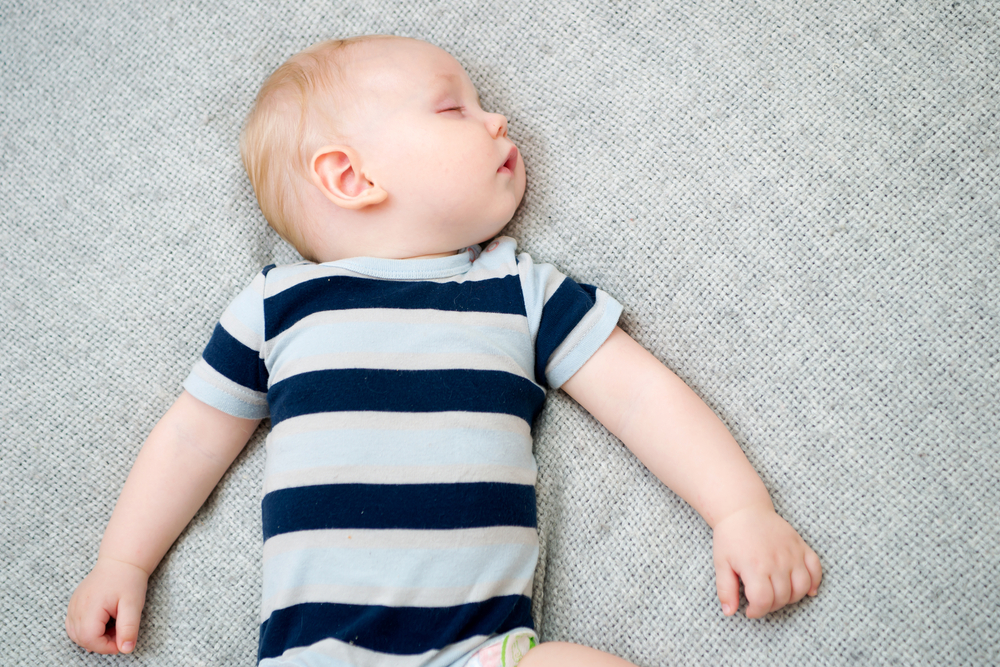SIDS: Causes & Prevention

Sudden infant death syndrome (SIDS), sometimes called crib death, is the sudden and unexpected death of a child younger than age 1 that cannot be explained by other causes. It is the leading cause of death of children ages 1 to 12 months, according to the Centers for Disease Control and Prevention. In 2010, more than 2,000 U.S. infants died from SIDS. The National Institutes of Health reports that SIDS is most likely to occur when the baby is between 2 and 4 months old. The incidence increases in cold weather. Infants who die of SIDS show no signs of suffering.
In the United States, boys are more likely to be victims of SIDS, according to the NIH. Compared with Caucasian infants, African American infants are twice as likely — and Native American infants are nearly three times as likely — to die from SIDS.
Causes
The exact cause of SIDS is not known, and researchers now suspect that many factors act together to increase the risk of SIDS. According to the NIH, factors include:
- Problems with the baby's ability to wake from sleep. A recent study published in the journal Pediatrics suggested that babies who die from SIDS have brain-stem abnormalities that prevent them from waking up when they are unable to get sufficient oxygen.
- Problems with the body's ability to detect an excess of carbon dioxide in the blood, which should signal breathing.
- Sleeping on the stomach or side. Studies suggest that stomach sleeping increases the risk of SIDS by 1.7 to 12.9-fold, compared to back sleeping.
- Sleeping on soft bedding/soft surfaces
- Sleeping with parents
- Premature birth/low birth weight
- Being exposed to cigarette smoke in the womb or after birth
- Poor prenatal care
- Living in poverty
- Having a brother or sister who died from SIDS
- Being a multiple birth (twins or triplets or more)
- Short time between pregnancies
Prevention
To prevent SIDS, the American Academy of Pediatrics recommends the following:
- Put a baby to sleep on his/her back: A public health campaign to place babies on their backs to sleep has reduced the incidence of SIDS by 50 percent since 1992.
- Place babies to sleep on a firm surface, such as a crib.
- Babies should not sleep in the same bed as their parents or other children. However, having the baby's crib in the same room as the parents' is recommended, as it can allow for feeding at nighttime.
- Do not use soft bedding materials — such as pillows, comforters or quilts — in a baby's crib. Soft toys should also be kept out of the baby's sleeping area. The ideal baby bed consists solely of a firm crib mattress covered by a fitted sheet, the AAP says.
- The temperature in the baby's room should not be too hot.
- Do not use products marketed as a way to reduce SIDS risk, such as wedges and positioners, which have not been tested for safety or effectiveness.
- Give the baby a pacifier (without a string) at naptime and bedtime, which has been suggested to reduce the risk of SIDS, but don't force the baby to use a pacifier.
The National Institutes of Health also suggests that mothers breastfeed their babies, which reduces some of the upper respiratory infections that may impact SIDS development. Additionally, parents should be careful not to give honey to children younger than 1 year old. Having honey may cause infant botulism, a severe but treatable illness in which babies suffer from muscle weakness and breathing problems, and that may be associated with SIDS.
Further reading
- Safe to Sleep public education campaign
- PubMed Health: Sudden Infant Death Syndrome
- CDC: Sudden Unexpected Infant Death and Sudden Infant Death Syndrome
This article is for informational purposes only, and is not meant to offer medical advice.
Jessie Szalay contributed to this article.
Sign up for the Live Science daily newsletter now
Get the world’s most fascinating discoveries delivered straight to your inbox.

Rachael is a Live Science contributor, and was a former channel editor and senior writer for Live Science between 2010 and 2022. She has a master's degree in journalism from New York University's Science, Health and Environmental Reporting Program. She also holds a B.S. in molecular biology and an M.S. in biology from the University of California, San Diego. Her work has appeared in Scienceline, The Washington Post and Scientific American.










